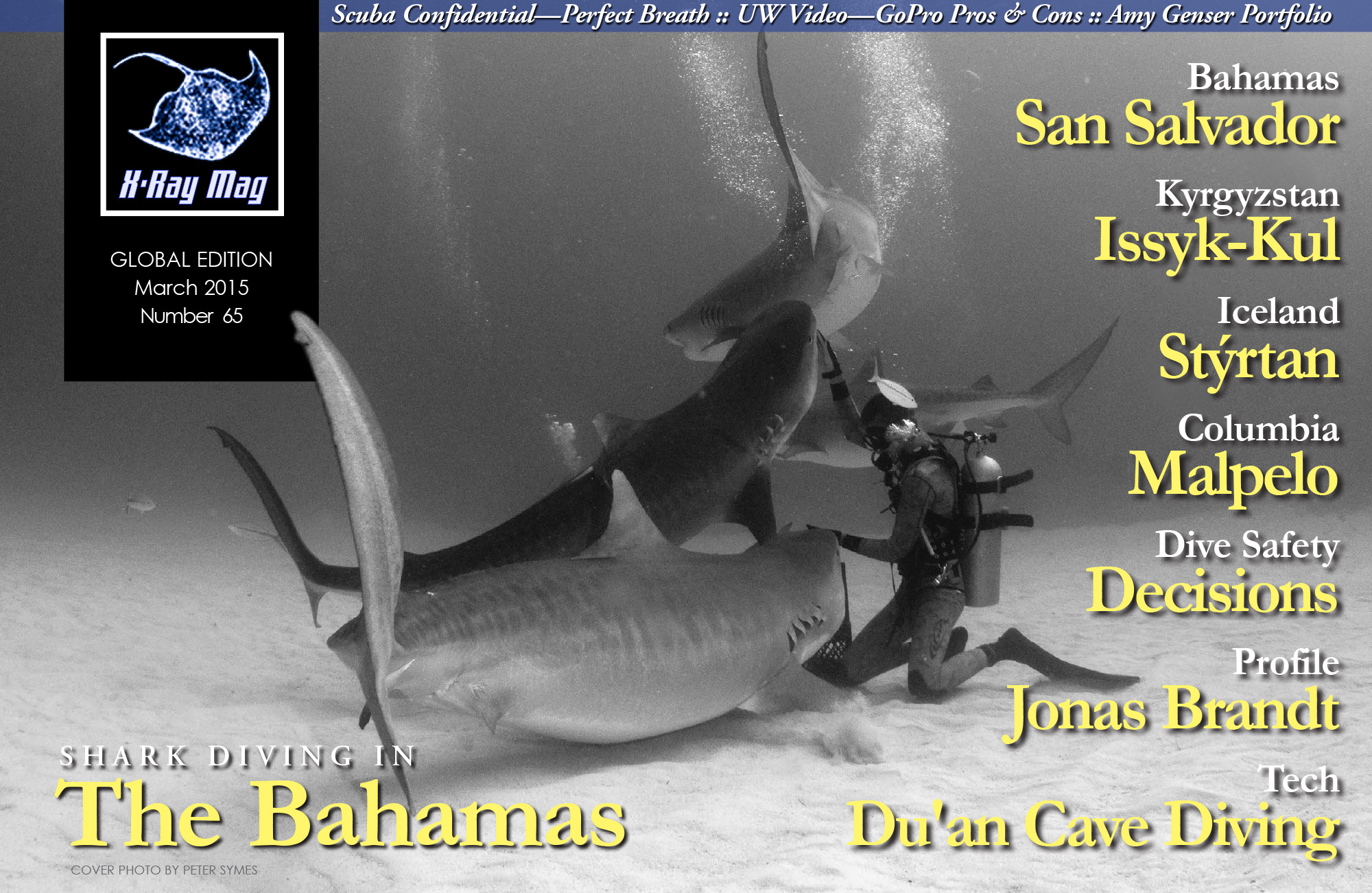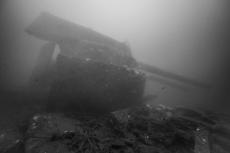During the two world wars, many private vessels were confiscated by the British Royal Navy. These luxury yachts were often employed during dangerous missions, which did not always end well.
Contributed by
Factfile
Having dived over 400 wrecks, Vic Verlinden is an avid, pioneering wreck diver, award-winning underwater photographer and dive guide from Belgium.
His work has been published in dive magazines and technical diving publications in the United States, Russia, France, Germany, Belgium, United Kingdom and the Netherlands.
He is the organizer of tekDive-Europe technical dive show. See: tekdive-europe.com
REFERENCES: wrecksite.eu, wikipedia.org
The HMS Warrior II, once formerly named "Goizeko Izarra", was built in 1904 in Troon, Scotland, as a luxury steam yacht for a private owner. The ship was 284 feet (84 meters) long, an extraordinary size for this type of ship. It was also equipped with two engines and furnished with expensive materials.
During the First World War, she was confiscated and had to serve her duty as a navy vessel. However, it was during the Second World War that this beautiful ship came to her end. On 11 July 1940, the former yacht was in the English channel roughly 20 miles from Weymouth, when it was attacked by a German plane. The pilot had circled the ship once before deciding to attack. The Warrior II took a direct hit and sank almost immediately. On that day, the Warrior II crew sustained one casualty.
Discovery
A few years ago, the wreck was found by the skipper, Ian Taylor, of the Weymouth dive charter Skin Deep Diving. One of the divers recovered the ship's bell, leading to the positive identification of the ship. When I visited the wreck myself, I sailed with Skin Deep Diving, in the company of a French group that had adopted me for one week.
As the visibility in another part of the English Channel was bad, we decided to visit wrecks that were more to the north. According to our skipper, Len Hurdis, the visibility would be better here as the bottom structure was different. The seafloor at the location of the Warrior II wreck consisted of gravel and pebbles; hence, the current would not pick up any sand and mess up the visibility.
At these times, it's crucial to have an experienced skipper to help divers make the most of the money they invested in the week's worth of diving. Hurdis was an expert on all levels and kept his ship under control in all situations. This was a great reassurance to the participants of this wreck dive trip. He was supported by his wife, Maggie, who operated the elevator that picked up the divers from the water.
That day, we were with 12 technical divers on board, which required a certain discipline to assure that all went smoothly. After the down line was in place, the first teams prepared themselves to enter the water. There were several open circuit divers on board and they would enter the water first, to ensure they would make their ascent roughly in time with the rebreather divers. It was agreed that the maximum dive time would not exceed two hours.
Diving
My buddy on this dive was a cave diver with a different type of rebreather than what I had on; therefore, we worked out plans and agreements in case of an emergency. Dive planning was one of the most important items to arrange when exploring a wreck at greater depths. The wreck was at a depth of 54 meters. We decided not to exceed the 35-minute bottom time.
After about ten minutes, it was our turn to jump overboard and slowly drift towards the buoy. Because several teams would come in after us, we had to descend as quickly as possible. At six meters below the surface, we did a thorough bubble check to make sure the rebreathers were closed. Then, we descended to the wreck.
At 45 meters, we started to see parts of it. The anchor of the down line was close to one of the steam boilers. Around this boiler, the copper and brass pipes and valves—whose function were to divide the steam—were still present. The visibility at the bottom was more than eight meters, so we decided not to deploy a guideline. However, my buddy hung a strobe light on the down line to make it easier to find when it was time to start our ascent.
Then, the real exploration of the wreck began as we swam in the direction of the stern.
Trip to the swimming pool
The wreck had degraded and fallen apart over the years, hence we needed to watch out for the sharp edges of the hull plates scattered about on the seafloor. One of the plates still stood upright, and square portholes were still clearly visible on the wreck. Several meters away, we saw the same type of portholes sticking out from the sand. These probably served to bring light to the saloon or dining area.
Several years ago, I had seen similar bronze portholes on the wreck of the SS Tubantia in the North Sea. So, it appeared these items were much used in that period on passenger ships. Today, it would be unthinkable and too expensive to equip a ship with such rich materials.
Continuing our exploration, we discovered pieces of a floor covered with bright green tiles. Apparently, these were remnants of a swimming pool, making it abundantly clear that money was no object during this ship's construction. Next to the swimming pool, we found parts of the mosaic tiles of the showers. Further along, towards the stern, I recognized one of the capstans, probably driven by steam. These served to pull in the lines and hawsers during the mooring of the ship.
Directly aft of the capstans, we found the rudder mechanism with the rudder axle to which the rudder was connected. By now, we had reached the end of the wreck and it was time to make our way back. On the way back, we swam past two large engines where I took my last pictures before we started our ascent.
Back to the surface
The ascent after a deep dive was an important moment. Before we began, I checked that I had replaced the cover on my dome port so as not to damage this. During the decompression, it was absolutely necessary to focus only on this task and not make any mistakes. Everything went according to plan.
After more than an hour, we surfaced, and it was a happy reunion with our dive ship that patiently awaited our return. Due to the clear visibility and the different spectacular parts on the wreck, this was indeed a memorable dive. ■














































